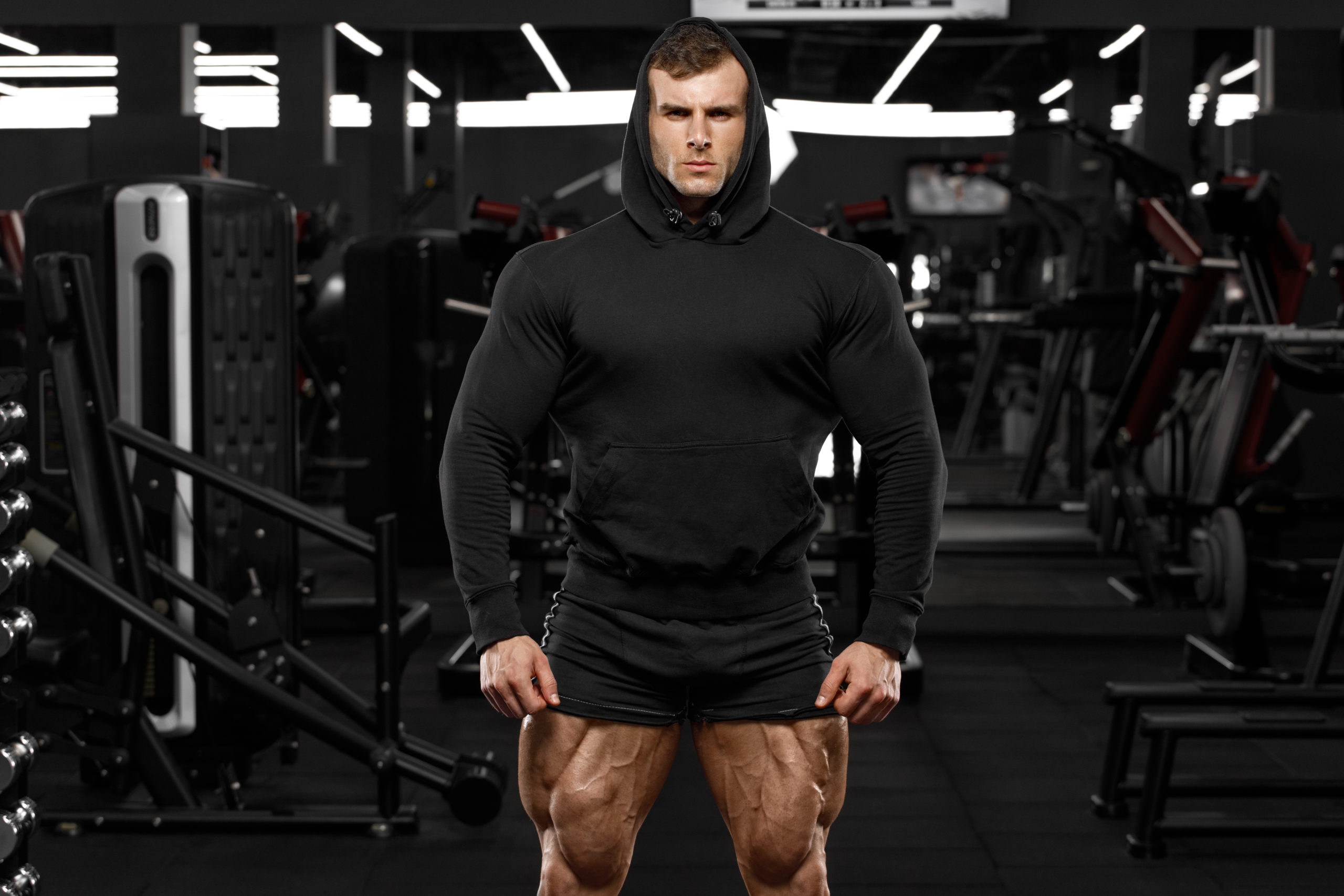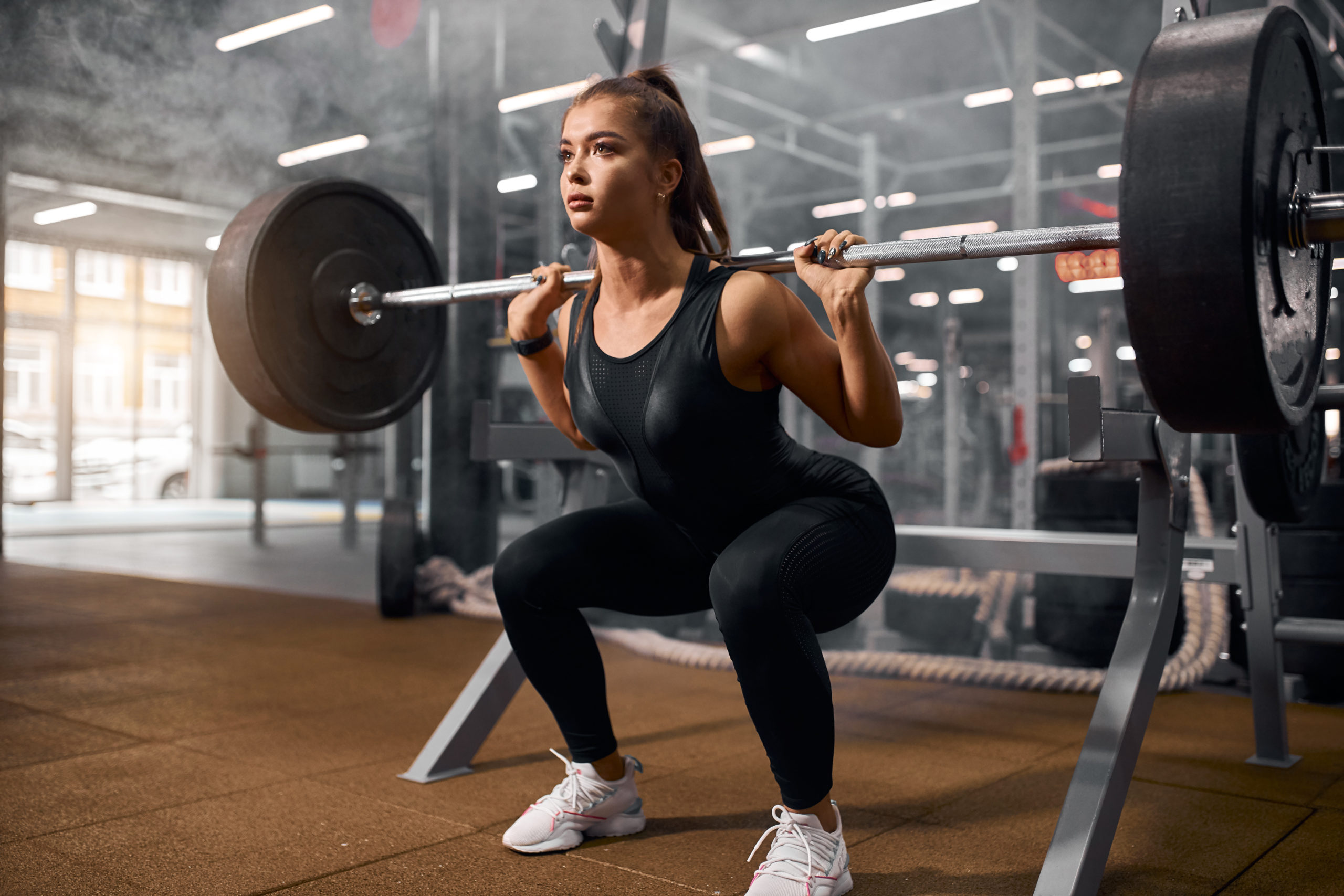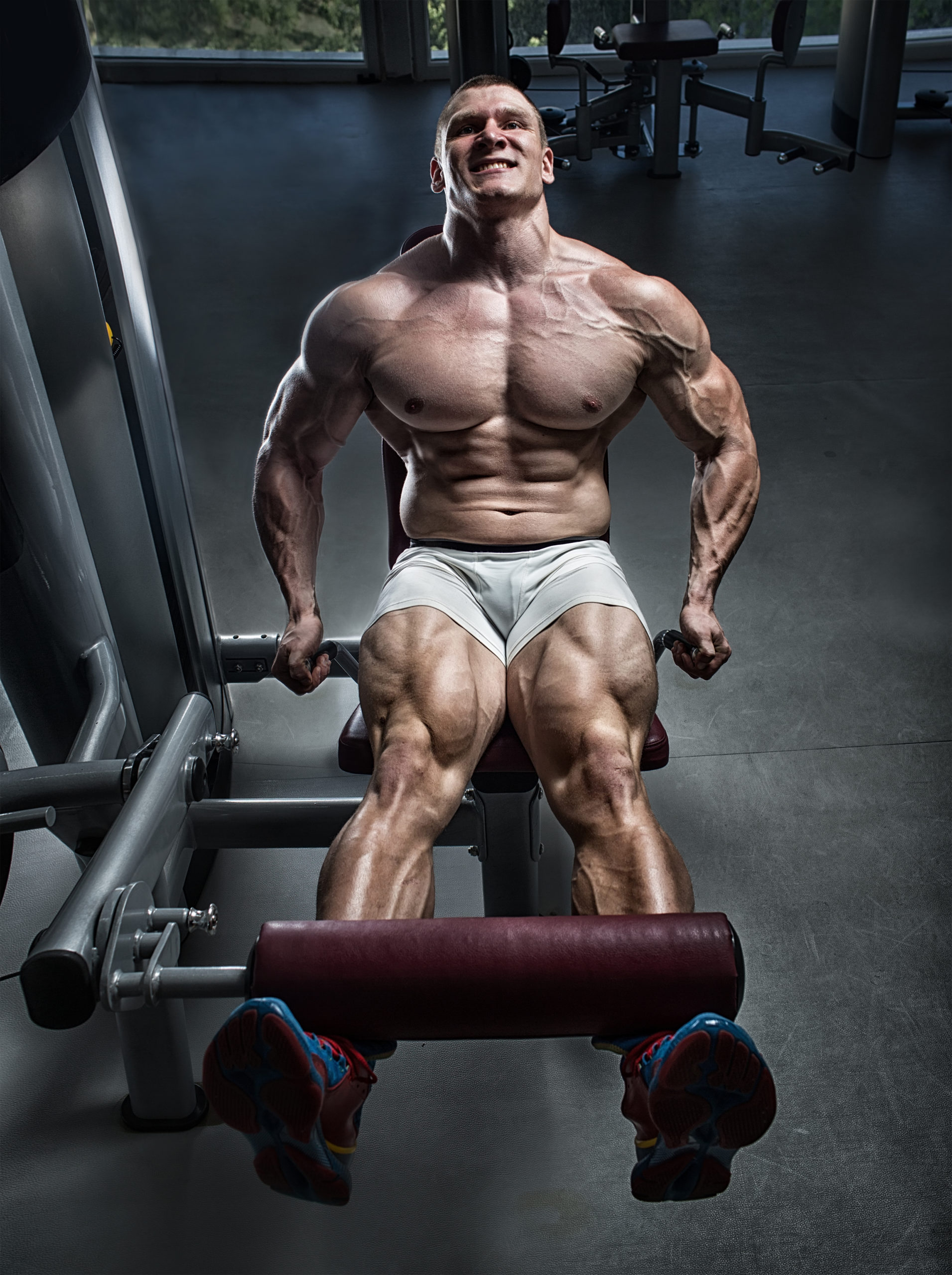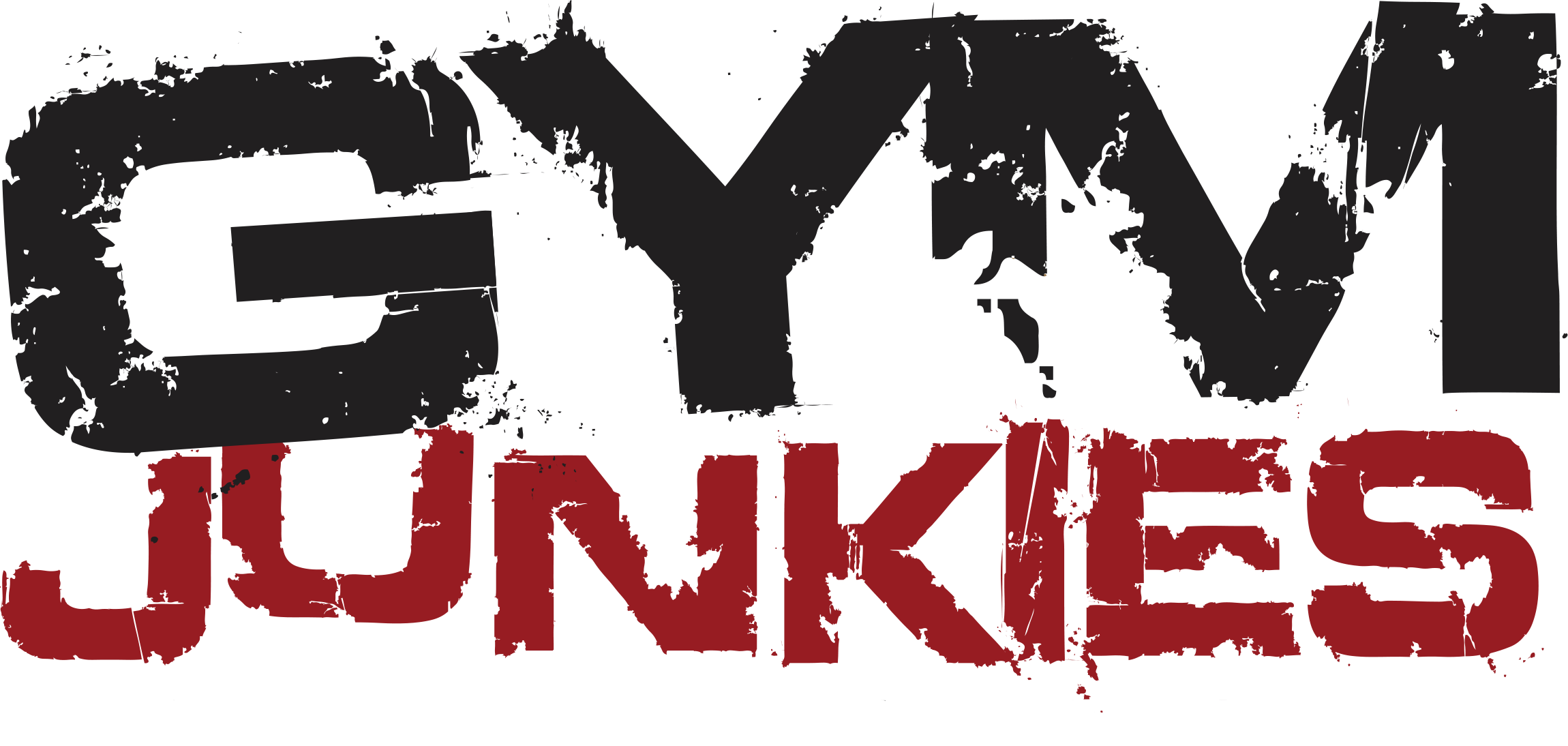
We see plenty of chest and back workouts, but there is not too much talk about leg workouts. But of course, they need to be worked as well. We do not want to walk around with chicken legs. In this article we will focus on training quadriceps to grow your quads. More specifically, the leg extensions and barbell squats. Furthermore, how to perform them properly and which part of the muscles they train.
Quadriceps Exercises
There are many different quadriceps exercises, but we will focus on leg extensions and barbell squats. The squat obviously incorporates more muscles such as the glutes, hamstrings and calves, but it is a great exercises for the quads in the lengthened position.
For this reason, barbell squats can be great to create mechanical damage and improve systemic conditioning.
In contrast, the leg extensions train the quads in the shortened position. It is the best and most stable exercise to fully shorten your quads, without incorporating other tissue. Thus, it can be used in combination with most other quad exercises, because it does not fatigue other tissue like the squats or deadlifts.
Leg Extensions to Grow Your Quads
The leg extension is the best exercise out there to isolate the quadriceps. This is because there is no movement of the hips. Which means, we can work our quads in the shortened position much better than the other knee-flexing exercises we have. Therefore, leg extensions are one of the best exercises to grow your quads.
How to Perform Leg Extensions
- Adjust the back pad so you sit straight, and maintain a neutral spine (not leaning back)
- Align knees with the pivot of the leg extension
- Adjust lower pad to ankle height
- Make sure your knees are always facing forward
- Pull yourself down into the seat as you are performing the exercise
- Don’t bounce back up from the bottom, control the repetition
- Squeeze the quads at the top
Benefits of Leg Extensions
Since the leg extension mainly works the quadriceps in the shortened position, it is a great choice for metabolic, high-intensity programs. In these types of workouts we want to get the metabolic benefits and train frequently, without getting too much mechanical damage.
Mechanical damage predominantly occurs from training the muscles to failure in the lengthened position.
In other words, we can do high amounts of work and go to a higher degree of fatigue for the quads with the leg extension, without causing much mechanical damage. Thus, we can recover faster, and train more frequently. Which is exactly what we want in a metabolic phase.
Along with this, the leg extension is a very safe exercise. By making sure you are controlling the repetitions, and not bouncing from the bottom, you can work until you can no longer move.
Of course, it is important to control your repetitions, and not kill your knees.
In the leg extension, your foot is pretty much floating in the middle of the air, which decreases your knee stability. By and large, in the lengthened position. Therefore, it is best to primarily use the exercise to train the quads in the shortened position. This can be done by adjusting your tempo and resistance profile to train it in the shortened position.
From this, we understand that the leg extension is not great if our main goal is mechanical damage. However, it can be used as a pre-exhausting exercise, before training the quads in the lengthened position.
For instance as a superset with hack squats or a barbell squat. This combination is very powerful to really fatigue those quads.
Extra Points
Like we said, the leg extension is the best and most stable exercise to fully isolate the quads. Hence, it is a very good choice if you want to train the quads to complete failure without involving other muscles or having safety in mind.
It makes the leg extension a very flexible exercise, as you can incorporate it with most other quad exercises. Thus, you can create most stimuli you want, if coupled correctly.
For instance, you can superset the leg extension with a hack squat or a barbell squat.
Those exercises train the opposite resistance profiles. While the leg extension primarily trains the shortened position, the squat trains it in the lengthened position. Therefore, by coupling these exercises, you can fatigue the quads in a much greater range of motion than the given exercises can on their own.
Barbell Squats to Grow Your Quads

Contrary to the leg extension, barbell squats train our quadriceps in the lengthened position. For that reason, it is a great exercise to create mechanical damage or to be used in a strength program. Of course, another staple exercise to grow your quads.
Moreover, the hips are at work in this exercise. Thus, making it a more systemic demanding exercise.
Many people struggle to go down to full knee flexion in a squat, without bending their lower back. But do not worry, we can elevate our heels to fix this issue. By elevating your heels with wedges or something similar, you can basically simulate better ankle mobility. The only difference in a heel elevated squat is less glute focus than in a regular squat.
How to Perform the Barbell Squat
- Don’t hyperextend at the top
- Use heel elevation if limited by knee flexion
- Keep the abs tight
- Keep the spine neutral the whole time
- Stop right before the spine/pelvis starts bending. If you go past this, you go past the hip flexion point, and the spine will take over. Some people do this, thinking it will give them better glutes. It is rather the complete opposite, an “ass-less” squat, because your body will have to use the spine and quads to get back up.
It is very important to find your range of motion for the squat, as it is a much less safe exercise than the leg extension. The most common cause of injury in the squat is when the pelvis or spine starts taking over.
Because the squat requires much more stability and coordination than more stable and isolated exercises, it is more difficult to train it to failure.
There are many muscles that can fatigue before your quads, thus decreasing the amount of stimulus you can specifically target to your quads.
When fatigue starts kicking in, the execution will be affected. This is especially true in people who are new to squatting, even more so at high intensities. Therefore, you must be careful to avoid injuries and actually do the exercise properly.
Benefits of Barbell Squats
As we mentioned, the barbell squats predominantly train our quads in the lengthened position. Meaning, there is a much greater chance of stimulating mechanical damage when training in this position to fatigue or failure. With this in mind, we know that it will take longer for us to recover from squats than leg extensions. This is because mechanical damage takes much longer to recover from than metabolic damage for our bodies.
Moreover, because there are so many different muscles at work in a squat, it can be great for systemic conditioning. So, if your goal is to improve your cardiovascularity or endurance, squats are a tremendous tool.
Additionally, barbell squats require a lot of stability from the spine. You need to keep in mind that this will affect what other exercises you do in that workout, or program in general. For instance, if you are doing a barbell squat and then doing a Romanian deadlift right after.
The spine will be heavily taxed from the squats, so the amount of weight you are able to do on the deadlifts will decrease. Consequently, affecting the amount of stimulus you can put on your hamstrings.
This is why it is so important to strategically plan your workout program. There are so many factors to consider, not only how many times you are able to drag yourself into the gym and out. Whether you want to grow your quads, or any other muscle, intelligent periodization is important.
Should I Workout Legs If They Are Still Sore?

If you are a little bit sore in the legs here and there, it is totally fine to train them. But for the most part, if any of your muscles constantly are sore when you are training them, you are not giving them enough time to recover.
To grow your quads, or any muscle, they need to recover. Consistently training them when they are sore, will just lead to overtraining and fatigue. Therefore, you are risking harm to your body if you keep training without letting your muscles recover first.
This could be a question of not only programming, but sleep and nutrition as well.
How Often Should You Workout Legs?
There is no specific answer to how often you should workout any muscle group. Not only does it depend on the stimuli you are trying to achieve with your program, but your ability to recover.
The simple answer is how fast you are able to recover from the stimulus, and which stimuli you are looking to create.
In a metabolic program, we want to train as frequently as we can, while in a neurological program we want to improve our ability and efficiency of our contractions. Also, we want to train more frequently.
However, by programming your tempo and variables intelligently, there are many ways to go about this. You do not need to train legs on one day, that is rather less efficient.
You could do quads twice a week, and the same for glutes and hamstrings. For instance by training quads and chest, hamstrings and glutes.
Most importantly, you need to have a specific plan for which stimulus you want to achieve, program according to that, and recover from it. If you are feeling sluggish, irritable, and weak, chances are you are not recovering well.
Conclusion
Both the leg extension and barbell squats are great exercises for the quadriceps. The barbell squats train the quads predominantly in the lengthened position. While on the other hand, the leg extensions mainly train the quads in the shortened position. The leg extension is the most stable exercise to solely isolate the quads, and can be used in a wide variety of cases. On the contrary, the barbell squat requires more coordination and stability, while also training the lengthened position. Therefore it is better when you are trying to achieve mechanical damage or train for systemic conditioning. On that account, it is vital that we have a goal in mind and program our training according to that goal.
Thank you for reading our article!
– Terry Asher
Terry Asher
Latest posts by Terry Asher (see all)
- Better Family – Product Review Liquid Daily 2 oz - Dec 16, 2024
- Post-Workout Recovery: The Key to Optimal Performance - Nov 25, 2024
- Pre-Workout Supplements – Everything You Need To Know - Nov 18, 2024











[…] range of motion plays a large role. Some exercises like the Squat and Dumbbell Lateral Raises are heavy in a small part of the movement, and not very heavy […]
[…] to illustrate this can be squats on a bosu ball, or doing biceps curls while squatting. These exercises are not necessarily bad or […]
[…] is a type of progression we rarely talk about in the fitness world. Maybe you could feel your quads more this workout than your previous workout. Or, simply be able to pause longer at the bottom of […]
Thank you for the information; there will be lots of options.
[…] range of motion plays a large role. Some exercises like the Squat and Dumbbell Lateral Raises are heavy in a small part of the movement, and not very heavy […]
[…] Source link […]
[…] Source link […]
[…] Source link […]
[…] to illustrate this can be squats on a bosu ball, or doing biceps curls while squatting. These exercises are not necessarily bad or […]